It’s time for Giovanni Reyna to find a new home.
The USA international has had a few disappointing seasons at Borussia Dortmund and experienced a largely failed loan move to Nottingham Forest last year, earning just nine appearances.
As the January transfer window opens, he can’t make the same mistake.
Another loan would be ideal, giving him six months to regain his form and prove his value as he searches for his next club.
A positive second half of the season will help him secure a full transfer during the summer—that is, of course, unless he heads to MLS in January.
Before another European club is secured, he has to prove his value.
Using statistics, our data analysis will pinpoint the best destinations to fit Reyna’s skill set.
We get a sense of his statistical profile to better understand the value he can add at his next destination.
We’ll then identify the teams that are deficient in those areas where Reyna excels.
Gio Reyna’s Data Profile
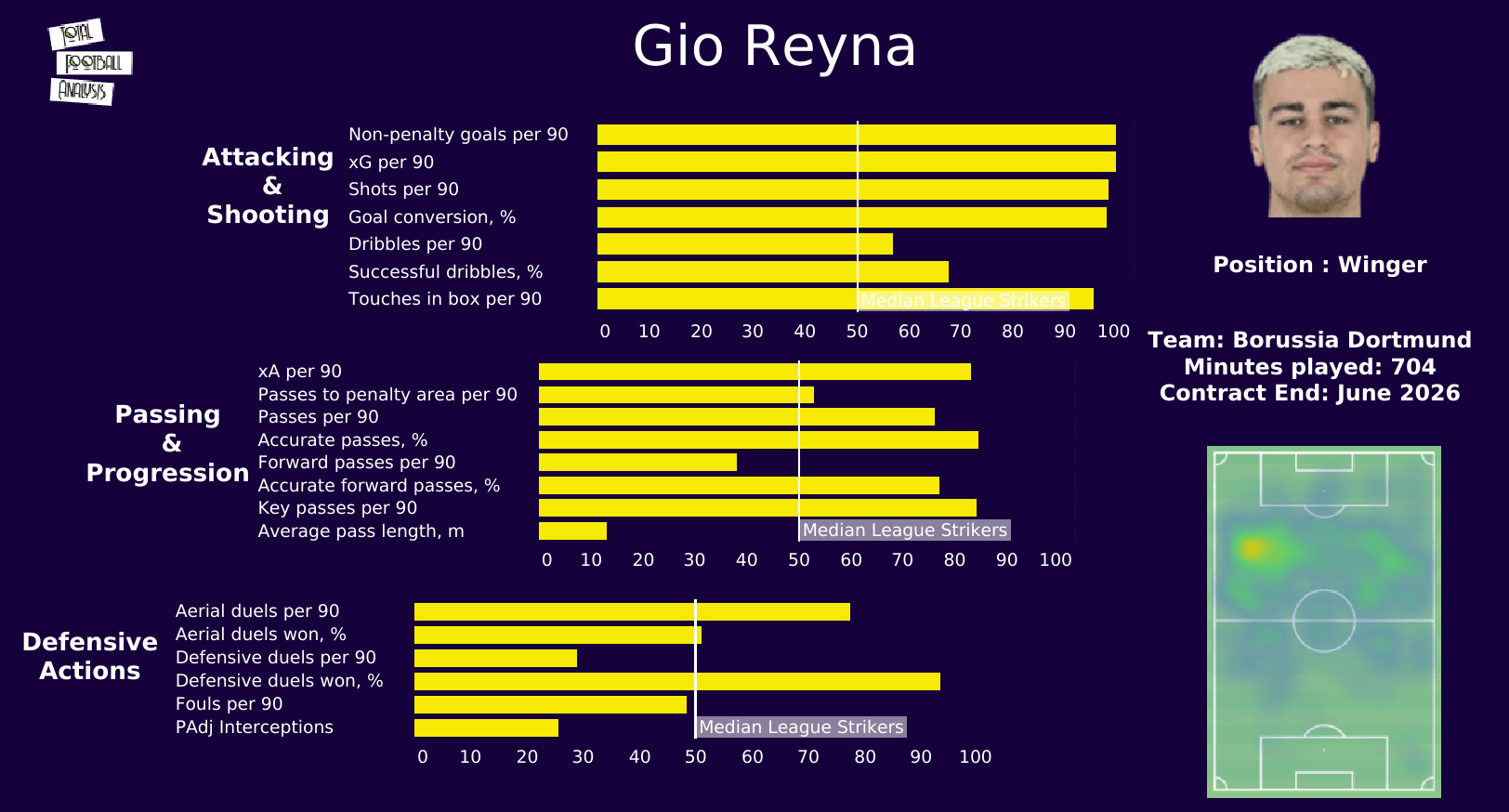
2023/24
season was difficult, but even then, it was more positive than the one he’s enduring in the current campaign.
Since he has so few statistics available this season, the profile above is taken from his 2023/24 campaign at Dortmund and Forest.
Even though he wasn’t getting the playing time he would have liked, we at least have enough data to assess his performance.
When he was on the pitch, his metrics were fantastic.
The context with this data is that Reyna was generally used as a super sub, so there’s not the richness we would like to see had he been a regular starter.
Still, when he was on the pitch, Reyna was effective and showcased his savvy playmaking ability in the final third.
And that’s ultimately what we’re looking for in Reyna’s next move.
We want a team that needs his talents in the final third and a team that has at least an average possession percentage of the ball.
What we need to find is a team that can get to the final third but is missing that final product at the end.
Which UEFA Top 7 Clubs Need Creativity In The Final Third?
To identify prospective clubs, we’ve taken the statistics from UEFA’s top five leagues, as well as the top four teams in Portugal and the top three in the Netherlands (top performers in recent years with the top resources).
As mentioned, we want a team that will have at least middling possession numbers but ideally above average.
Having watched Reyna play for years, I believe that a possession-oriented team is better suited to his skill set.
In addition to identifying a team that keeps the ball, we need to identify teams that are struggling to produce the final product.
We’ve used xG data, as well as field tilt and relating xG values to various parts of the pitch, which we will explain when we come across those specific charts.
We also must keep in mind that if he’s not starting at Borussia Dortmund and rarely receiving significant minutes off the bench, there is a certain class of teams that are simply beyond his reach at the moment.
To get us started, we are looking at possession and xG on the chart below.
It’s the teams in the top left quadrant that are of interest to us.
While they are above average in possession percentage, they rate below average in xG P90, so they are missing that breakthrough in the final third.
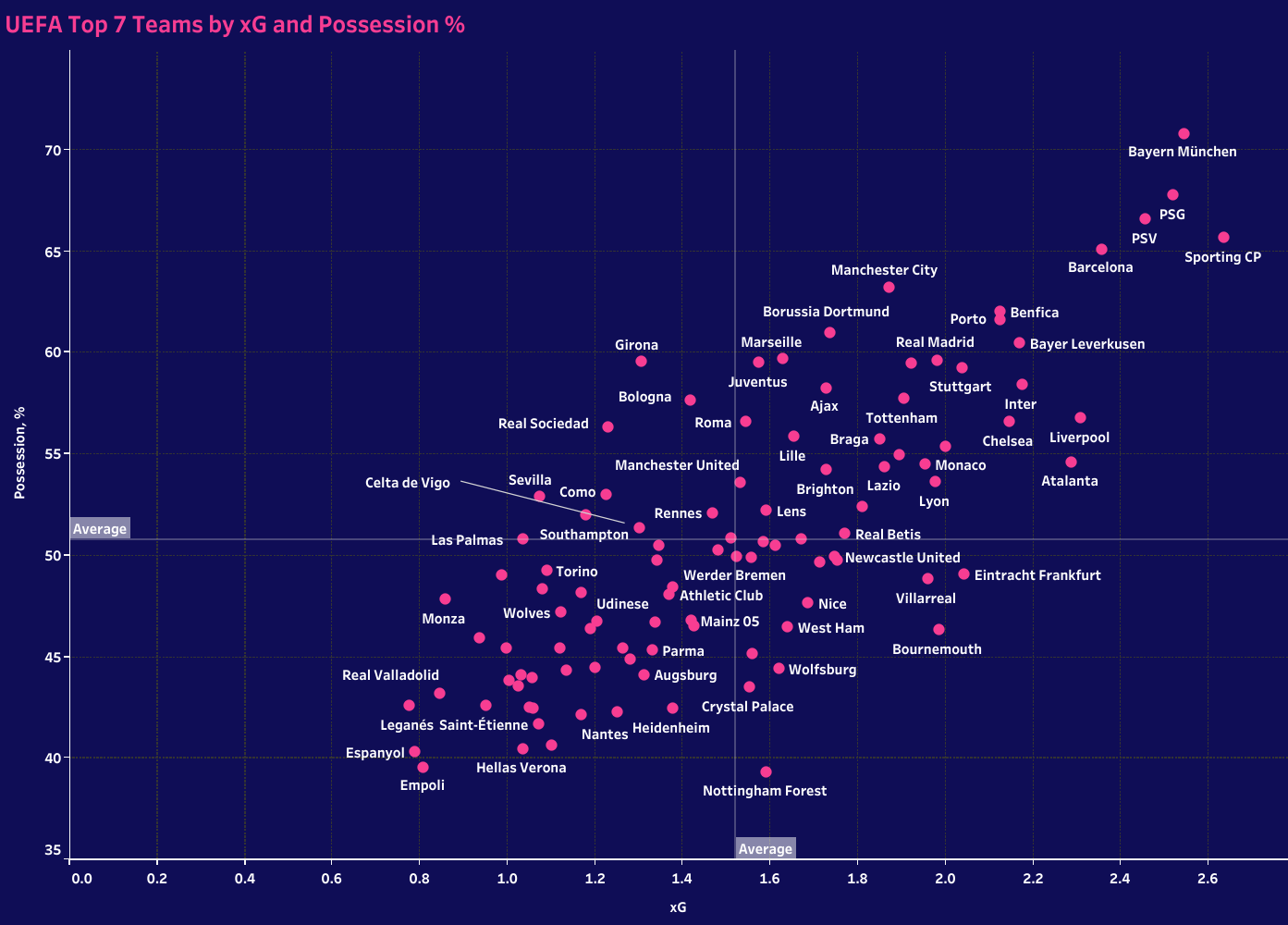
Right away, we can see a number of La Liga and Serie A teams in that quadrant.
From a stylistic perspective, those two leagues do seem like strong potential fits for Reyna.
Next, we have field tilt and deep completed passes P90.
Field tilt is measured on touches in the box rather than final third entries, giving us a sense of the teams that are reaching the box but struggling to link up those final passes.
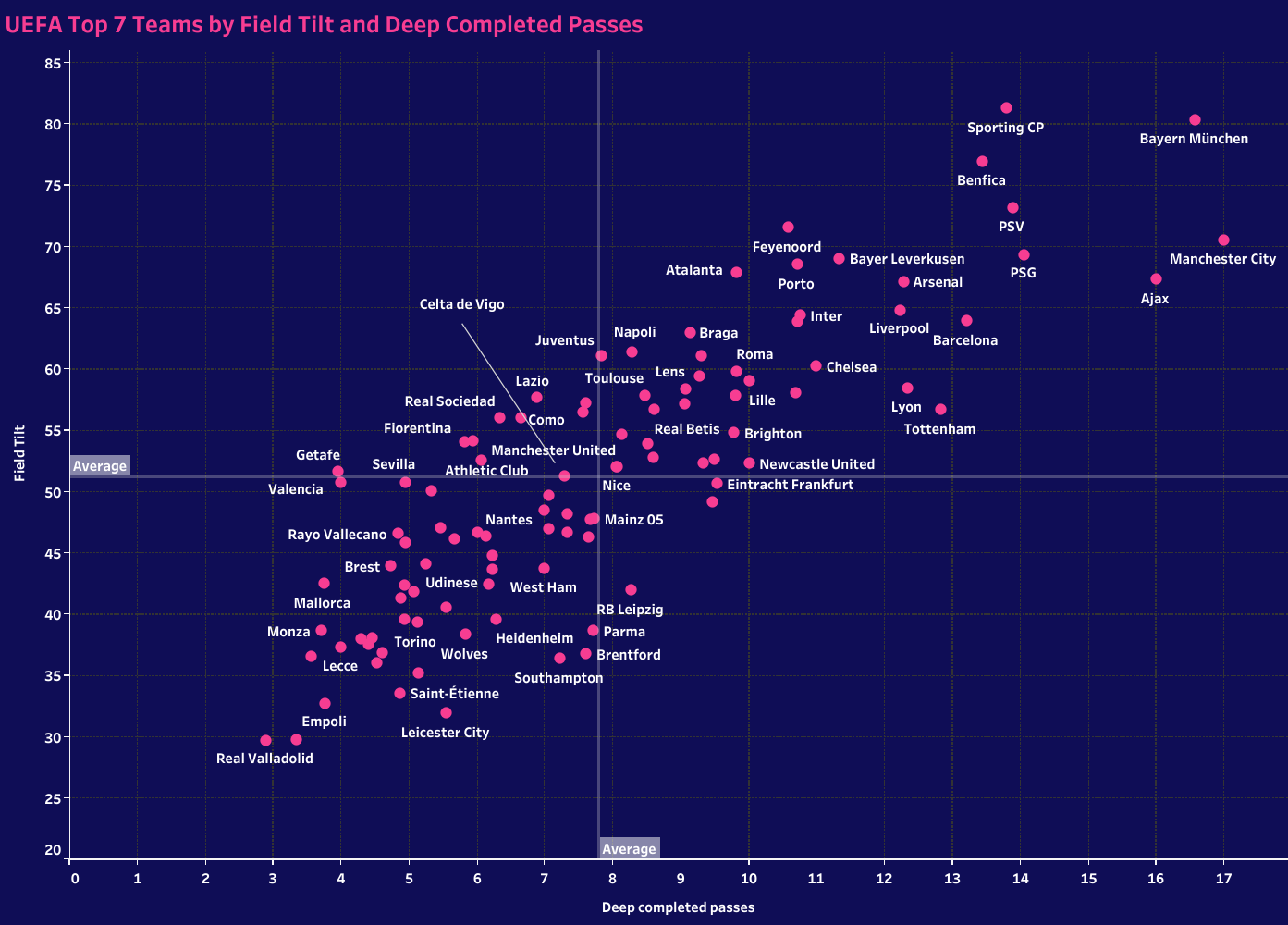
Looking at both charts, we do get a sense that Europe’s best-attacking teams are in the top right quadrant, while the clubs lacking firepower in the final third are in the bottom left.
We see remarkable consistency between the two graphs in the top left quadrant.
These are the sides of interest.
La Liga offers a number of teams that fit our criteria.
Sevilla, Celta de Vigo, Real Sociedad, and Valencia all have attacking needs that seem to align with Reyna’s skill set.
Girona, Rayo Vallecano, and Las Palmas also make appearances and join the list of teams we must investigate.
In Serie A, Torino, Como, and Bologna fall into that same category.
There are additional teams in the Premier League, Bundesliga, and Ligue 1 that we will look at, but right away, we see that Italy and Spain appear like excellent destinations.
Narrowing Gio Reyna’s List Of Prospective Clubs
With our preliminary list of teams that showed up in the top left quadrant in the previous section, we can now look at a smaller group of teams to assess needs.
With the smaller data set, we can also look at the final third performance in greater detail and move to more stylistic components within each club.
In Reyna, we have a player who can offer a creative solution in the final third to unlock defences and create shooting opportunities.
His ability to play forward, especially in the final third, is a key quality he offers.
We need to find which of the teams in this limited data set are in most need of his services.
To find the teams that are struggling to play forward, we calculated the percentage of passes that each of these clubs plays forward, lateral, and backward.
This is where we also have to understand there’s a stylistic component here.
Girona, for example, will play a significant percentage of lateral and backward passes, but that also suits their attacking tempo and the type of forward opportunities they are looking for.
Could they use help going forward more often? Yes, they probably could.
Will they try to fight someone with that capability in January?
Probably not, though it is interesting to note that Gio Reyna’s dad, Claudio Reyna, is a club legend at Manchester City, though his playing days predated The City Group takeover.
Looking at the percentage of passes, these teams played forward and laterally.
We get a sense of the sides that are struggling to pick out forward options and deferring to more lateral ball movement.
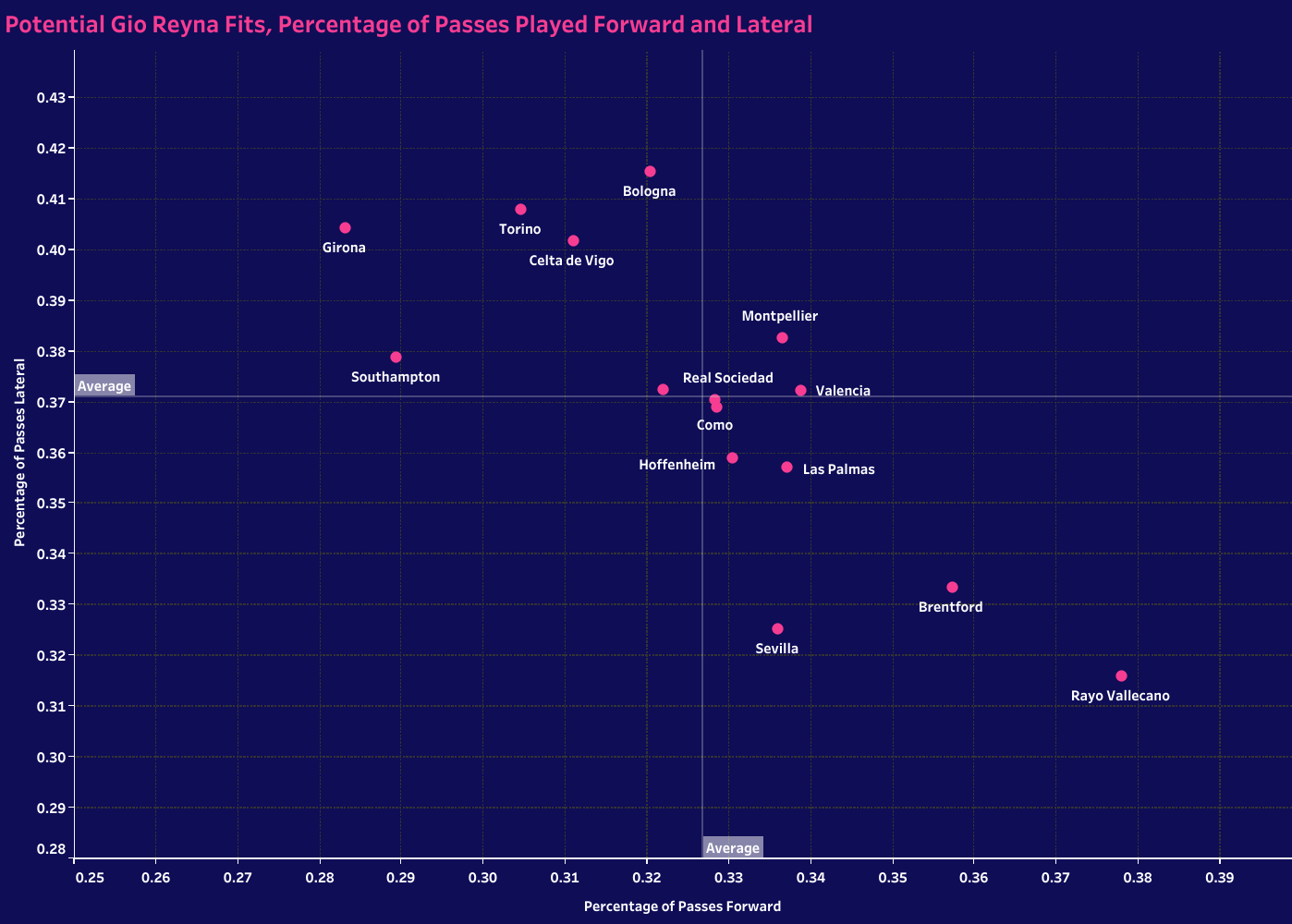
Girona falls into this category, as do Celta de Vigo, Torino, Bologna, and Southampton.
A number of the teams in the data set fall right around the sample’s median, with Sevilla, Brentford, and Rayo Vallecano tending to play more forward passes and fewer lateral than the other teams in the data set.
In addition to the sheer volume within each of these categories, we also want to look at success rates to determine which clubs can actually pull off these pass types.
Girona does very well in both categories, as does Southampton.
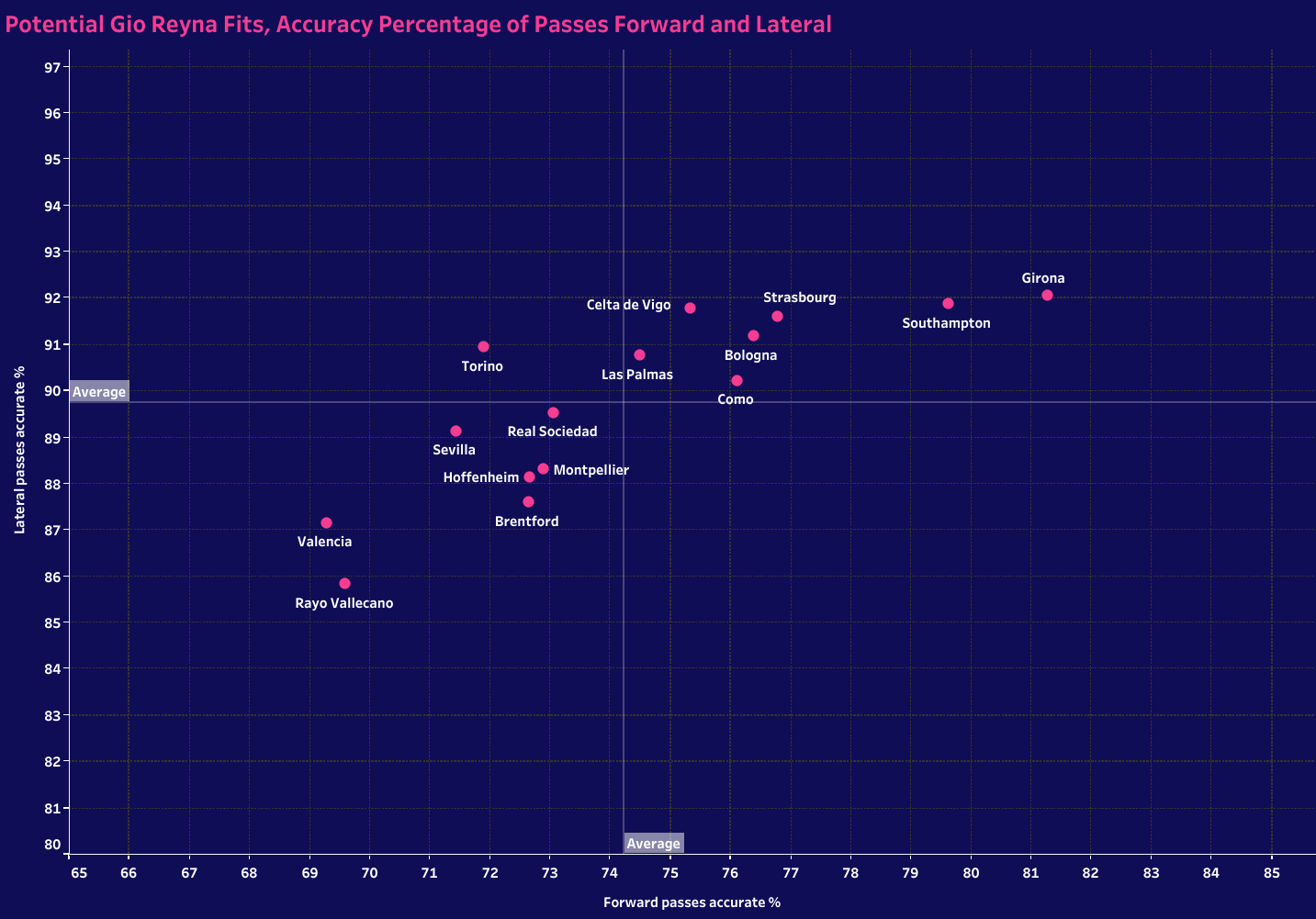
The clubs at the bottom left, which have less success completing both forward and lateral passes, are Rayo Vallecano, Valencia, Brentford, Hoffenheim, and Montpellier.
Sevilla and Real Sociedad also make the list, while Torino, Las Palmas, and Como are close.
Next, we’re evaluating the teams’ performances in the final third and penalty area.
The next graph measures passes to the final third and touches in the penalty area.
This will give us a sense of how consistently the teams are reaching each of those parts of the pitch.
The top right quadrant shows us which teams are having success reaching both the final third and the opposition’s box.
Knowing that these are teams struggling to produce high xG performances, we can now identify which ones are getting to the right parts of the pitch but lacking that breakthrough moment.
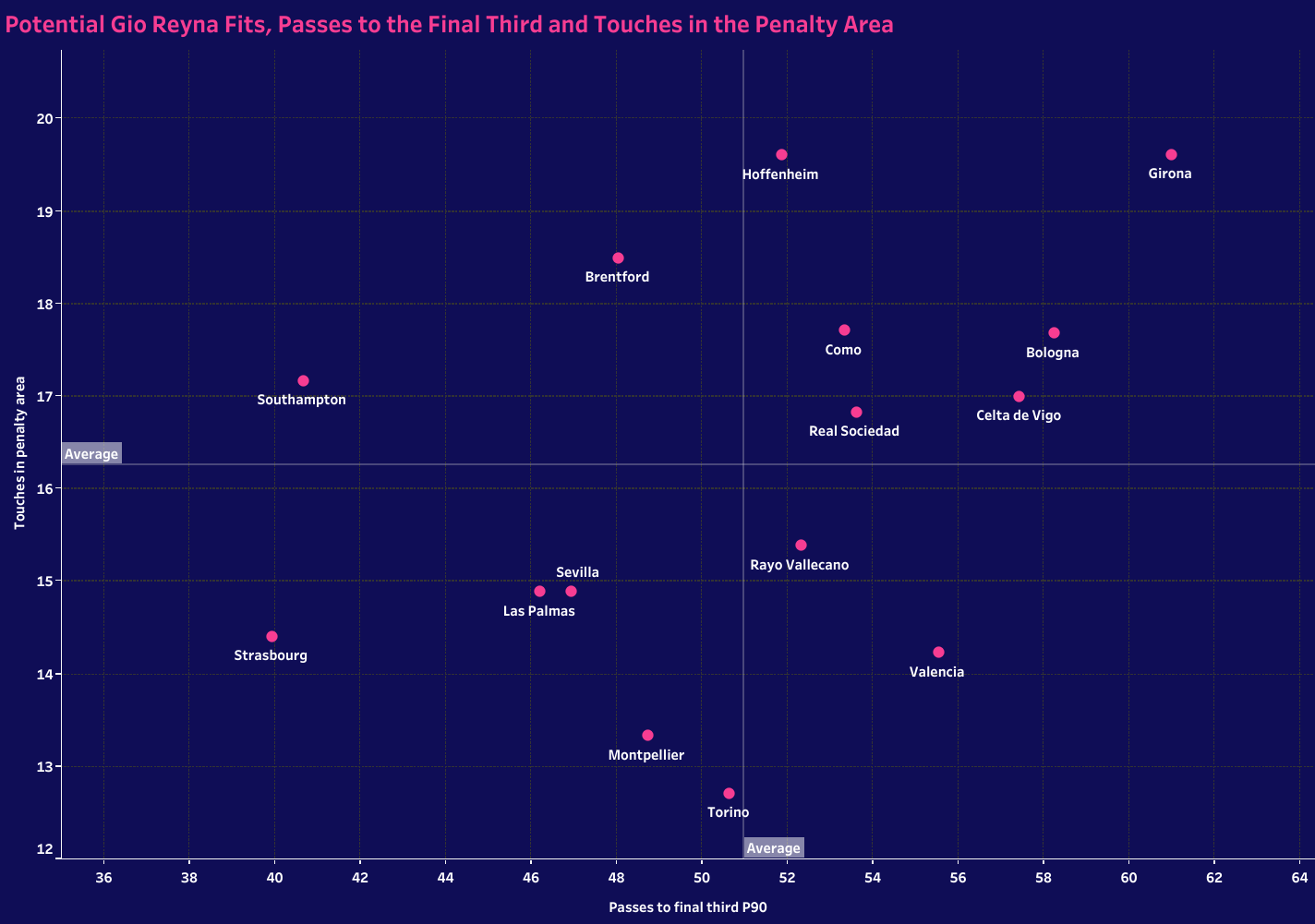
Girona is far and away at the top of the list, while Bologna and Hoffenheim are offset towards one of the two axes.
Como, Real Sociedad, and Celta de Vigo also fall into that top right quadrant.
Interestingly, Torino rates average among the data set in passes to the final third but greatly struggles to reach the box.
Sevilla, Las Palmas, and Montpellier are below average in both categories, but again, towards different parts of the quadrant.
Finally, we want to get a sense of how dangerous these clubs are when they reach the box and take their shots.
To calculate the threat they create, we’re measuring xG per shot and xG per box entry.
xG per shot will give us a sense of each team’s shot quality.
xG per box entry is a custom category we created.
The goal here is to assess how dangerous a team is once they reach the box.
The number can help us decipher whether they’re a team that gets into the box.
Still, they either struggle to create shooting opportunities or will settle for lower-value shots more consistently, lowering their score in the category.
The higher the score, the more teams tend to produce high-quality opportunities.
This is especially valuable when we’re assessing teams with a lot of the ball and even a lot of shots, gauging their ability to consistently produce high-value shots against organised defences.
For teams with lower possession percentages, this is a great way to ensure that when they do reach the opponent’s box, they’re at least effective in generating quality shots.
This is where the clubs in the bottom left quadrant are in the most need.
They’re struggling to produce high-quality shots and generally aren’t dangerous when they reach the opponent’s box.
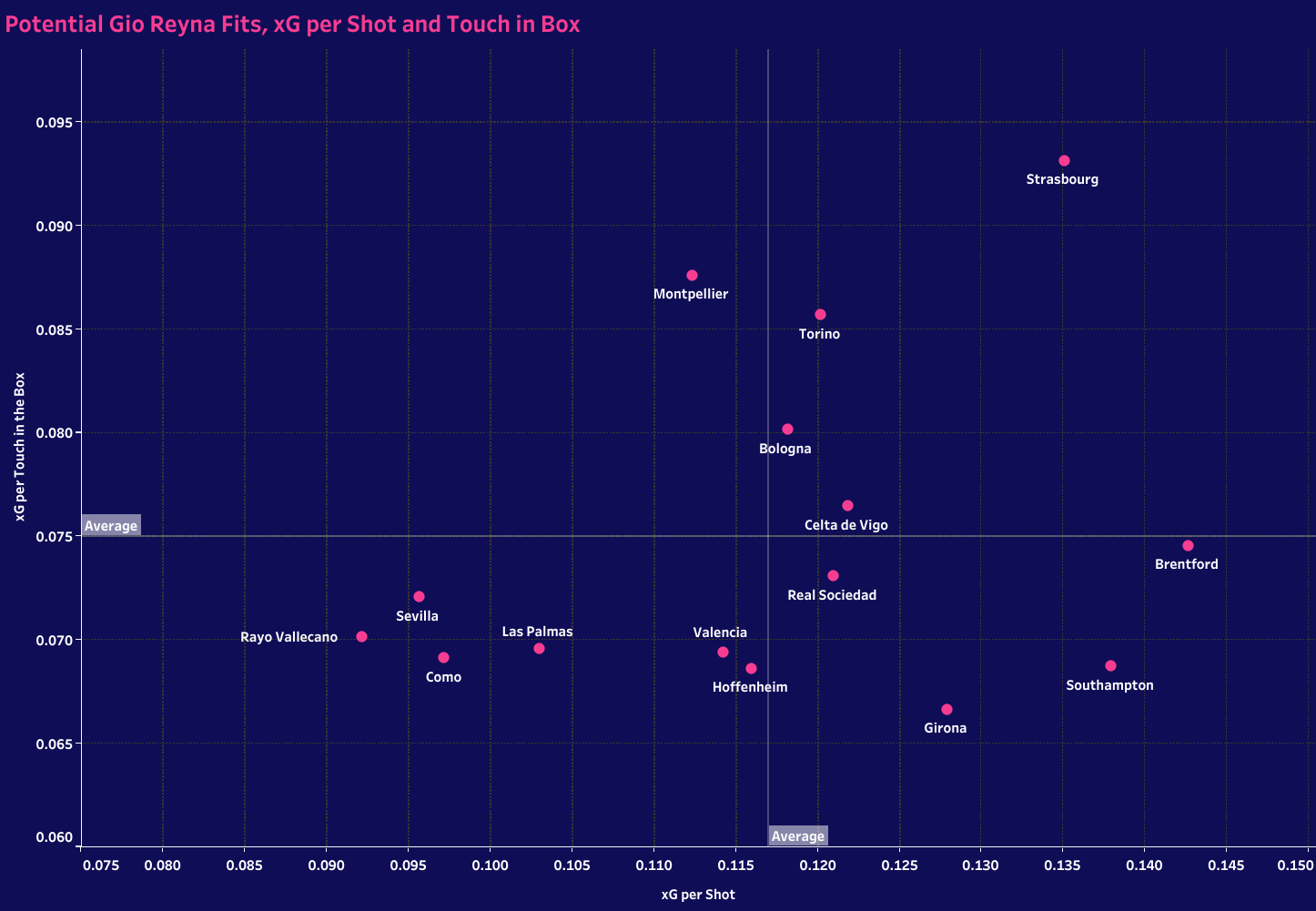
Como and Sevilla are there again, accompanied by Rayo Vallecano and Las Palmas in the most extreme cluster.
For some additional context, 0.13 xG per shot is average on a larger scale.
Only three clubs produce above-average xG per shot, so the majority of our data set falls below the UEFA top 5 threshold.
Conclusion
By targeting teams from that last section of our analysis, we get a sense of which clubs are more consistently failing to produce in the final third and pick out their options to play forward.
Though Girona and Las Palmas look like good options, they also have very unique styles that would make a January transfer difficult to work out.
Hoffenheim and Bologna fall into that category as well.
Since the January transfers have to integrate within the flow of the match calendar, clubs with less unique game models are better candidates for player movement.
With those considerations in mind, Sevilla, Como (a stretch here), Torino, and Celta de Vigo look like excellent options.
Rayo Vallecano and Valencia are decent options as well.
However, the general dysfunction of the clubs are turn-offs, especially for a player who needs a successful end to his season.
La Liga and Serie A are the best destinations for Reyna.
His time at Dortmund has come with mixed results.
At the moment, his tenure is most certainly in a downturn and a new destination is needed.
While there are rumours that he could join an MLS club for the 2025 season, that seems unlikely as Sevilla, Como, Torino, and Celta de Vigo all offer the opportunity to get his career back on track in Europe.
Better yet, they desperately need a player with his unique skill set.

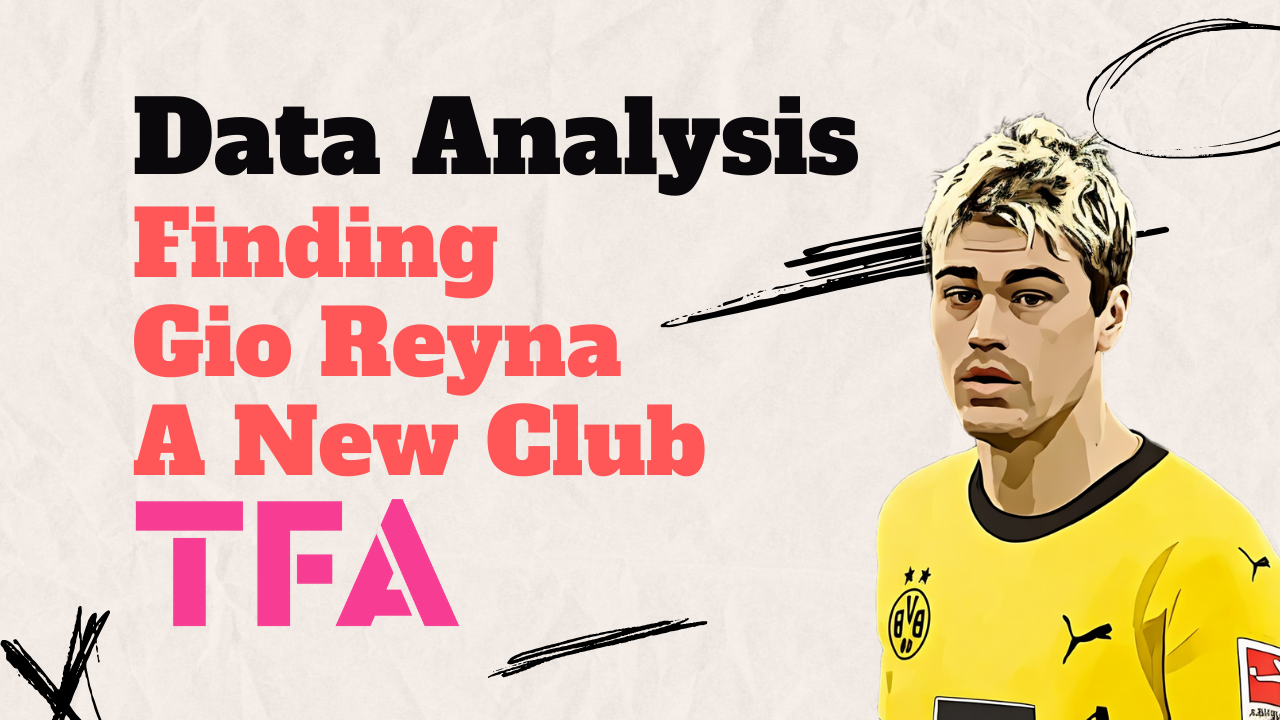



Comments